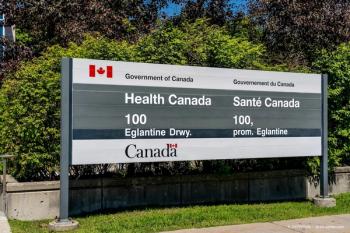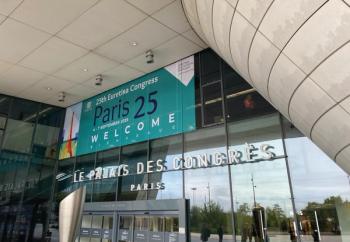
Fusion-protein anti-VEGF agent well tolerated for wet AMD; clinical improvements seem durable
Intravitreal injection of up to 4 mg of a fusion protein that is an anti-vascular endothelial growth factor agent (VEGF Trap-Eye, Regeneron Pharmaceuticals Inc.) is well tolerated and yields no evidence of ocular inflammation. The agent appears to produce rapid and durable clinical increases in best-corrected visual acuity, along with improvements in anatomic features, in patients with neovascular (wet) age-related macular degeneration.
Key Points
"[The agent] is a fusion protein of key domains from human receptors 1 and 2 combined with a human IgG Fc fragment and contains all human amino acid sequences," said Dr. Nguyen, assistant professor of ophthalmology, Wilmer Eye Institute, Johns Hopkins University School of Medicine, Baltimore.
The fusion protein, he added, "has a high affinity for and binds VEGF more tightly than naïve receptors or monoclonal antibodies. [The agent] blocks all VEGF-A isoforms as well as placental growth factors."
Dr. Nguyen and colleagues conducted a study to determine the safety, tolerability, maximum tolerated dose, and bioactivity of intravitreal injection of the fusion protein in patients with neovascular AMD. Phase I of the study had two parts. Part 1 enrolled 21 patients and was a dose-escalation study to determine the maximum tolerated dose. Part 2, which enrolled 24 patients, was a two-dose comparison study.
Phase I
In the first part of the phase I study, each patient received an intravitreal injection of one of six doses of the agent; doses ranged from 0.05 to 4 mg. Twenty-one patients who had neovascular AMD with lesions that were 12 disc areas or less in size and BCVA of 20/40 or worse were enrolled. Cohorts of three to six patients each were treated with a single dose of the fusion protein. Patients could be treated with agents other than the fusion protein after the 6-week primary endpoint.
In the second part of the phase I study, patients with VA levels ranging from 20/40 to 20/320 were enrolled and were randomly assigned to receive one intravitreal injection of either 0.15 or 4 mg of the agent. The patients then were observed. After 8 weeks, if they met pre-determined re-treatment criteria, patients were allowed to receive intravitreal treatment with 4 mg of the fusion protein. The primary endpoints were change in retinal thickness, VA, and characteristics of choroidal neovascularization (CNV), Dr. Nguyen explained.
In the CLEAR-IT AMD studies, the investigators at Johns Hopkins and several clinical centers throughout the United States evaluated bioactivity that included changes from baseline in VA, foveal thickness measured by OCT, and total area of CNV measured by fluorescein angiography. The patients also were monitored for the development of ocular and systemic events related to the injection of the agent, according to Dr. Nguyen.
"In part 1, we observed a significant decrease in the retinal thickness and improvement in the VA. Overall, there was a mean decrease of 78.8 μm of retinal thickness," Dr. Nguyen reported. "Only 14 of the 21 patients required re-treatment. The mean time to re-treatment was 166 days (median, 127 days)."
In part 2, in which 12 patients were randomly assigned to receive the 0.15-mg dose of the agent, and 12 patients were randomly assigned to receive the 4-mg dose, "thus far, there is no evidence of ocular inflammation. Most of the adverse events, such as conjunctival hemorrhage, were related to the intravitreal injection," he said.
Newsletter
Get the essential updates shaping the future of pharma manufacturing and compliance—subscribe today to Pharmaceutical Technology and never miss a breakthrough.















































